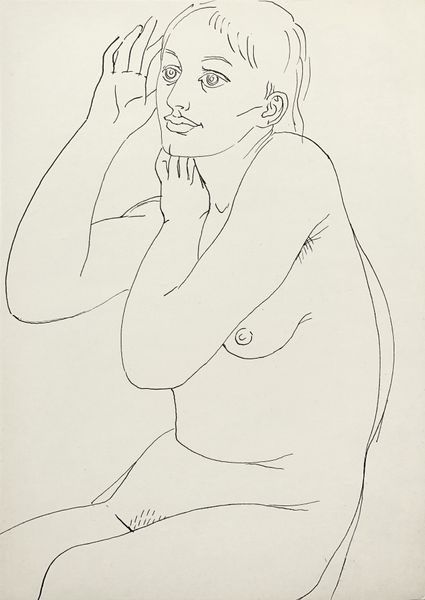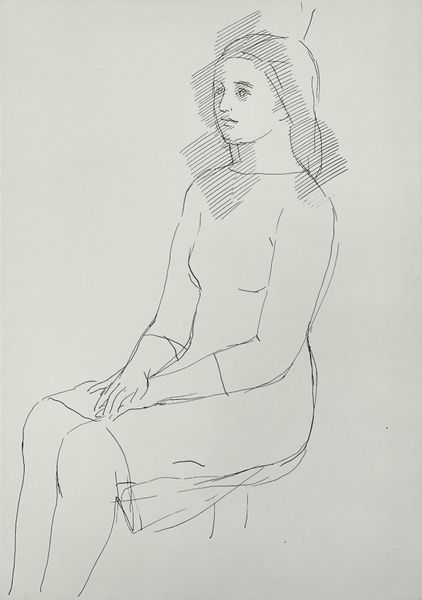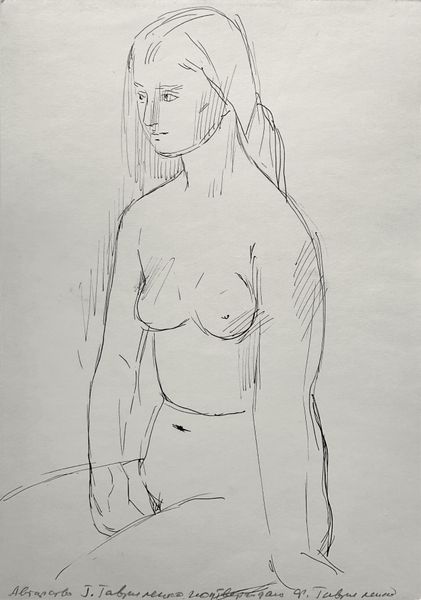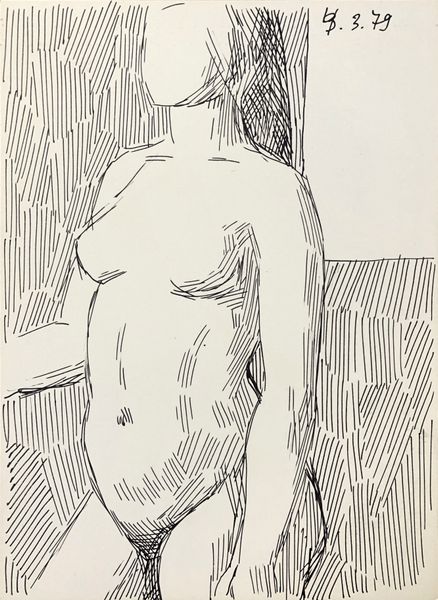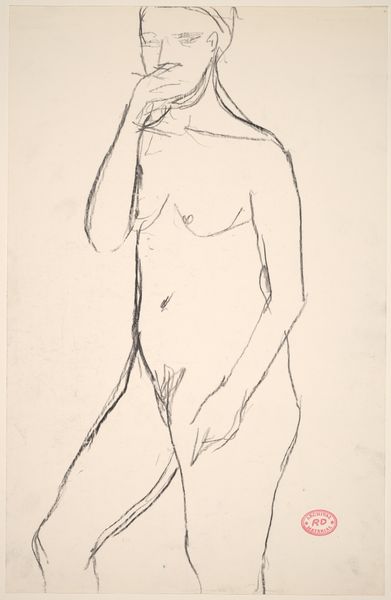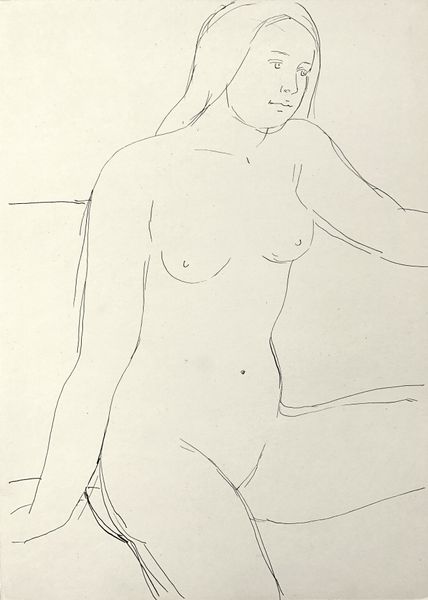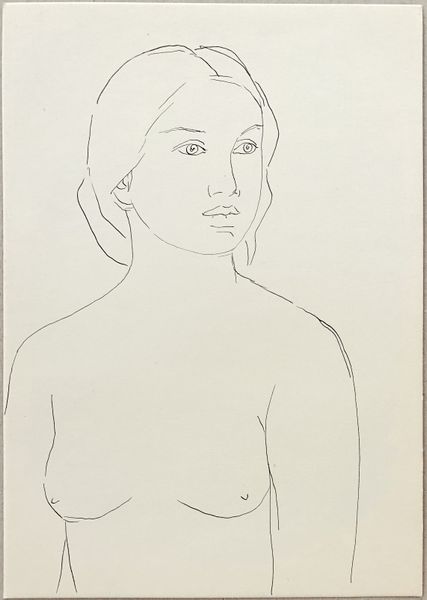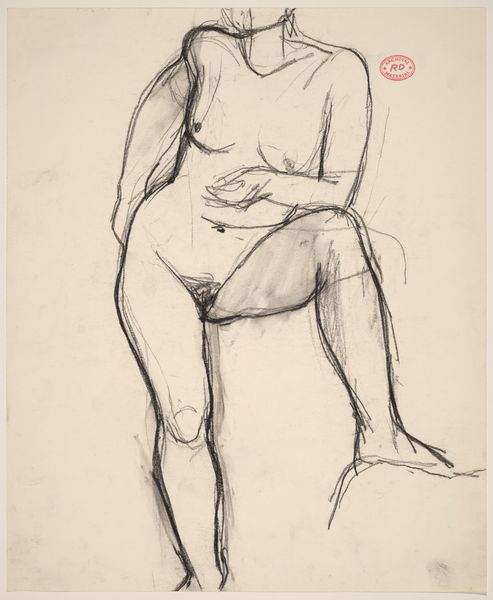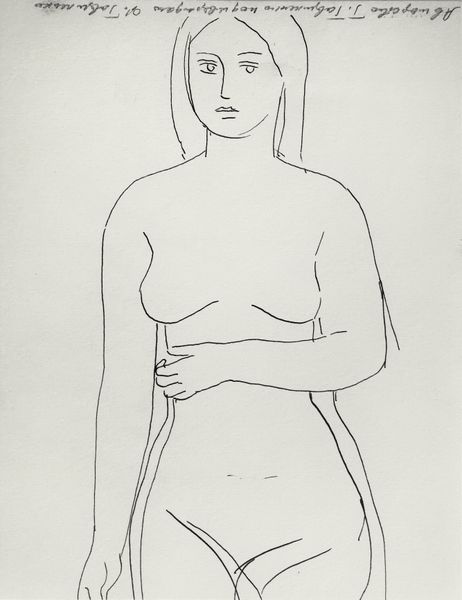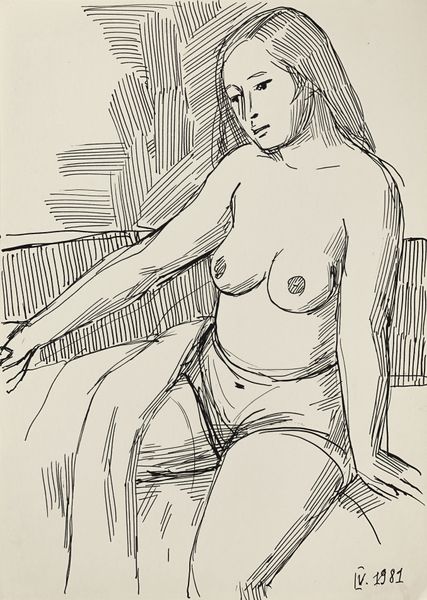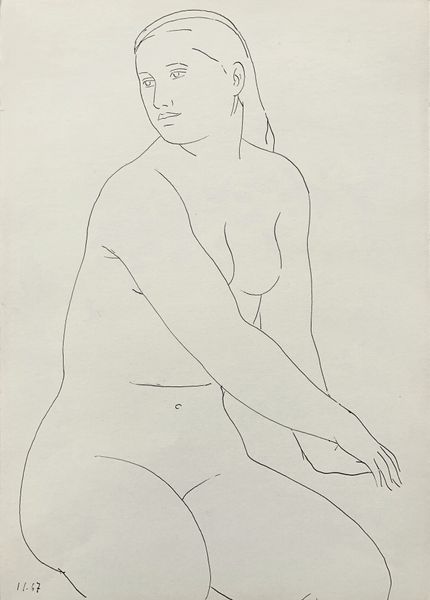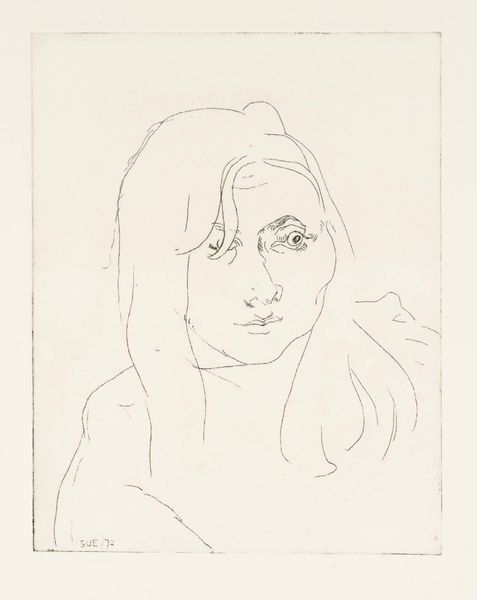
drawing
#
portrait
#
drawing
#
figuration
#
line
#
nude
Copyright: Hryhorii Havrylenko,Fair Use
Editor: Here we have Hryhorii Havrylenko's "Nude," a drawing from 1975, part of a private collection. I’m really struck by the simplicity of the lines, yet it still manages to feel like a strong, assertive image. What’s your read on it? Curator: I see it as a reflection of the socio-political climate around the female nude. By 1975, second-wave feminism had significantly shifted perceptions. How might a viewer at the time have interpreted this, compared to earlier eras of idealized nudes? Editor: That's interesting! So, instead of purely aesthetic appreciation, they would’ve been engaging with broader discussions about representation and objectification? Curator: Precisely. Consider the art institutions – who had power? Which artists and perspectives were highlighted? A male artist depicting a nude woman always carries certain connotations. Editor: But is Havrylenko necessarily perpetuating that, or potentially commenting on it? The gaze feels almost… neutral. Curator: That neutrality could be intentional, a conscious attempt to move away from the male gaze that historically dominated nude art. Or perhaps it's still inevitably present, just subtly disguised. The very act of display makes the subject public, political. Do you think it's effective? Editor: I think it's effective because it invites discussion rather than making a statement. Thank you. Curator: Agreed. By looking critically at pieces like this, we unravel the layers of influence and societal pressures embedded within even seemingly simple drawings.
Comments
No comments
Be the first to comment and join the conversation on the ultimate creative platform.
